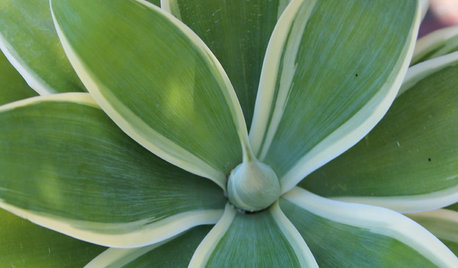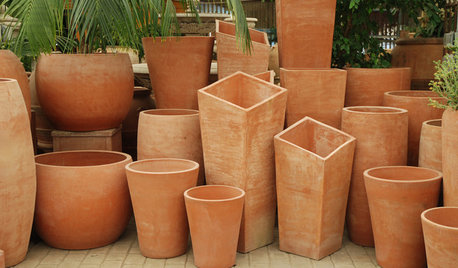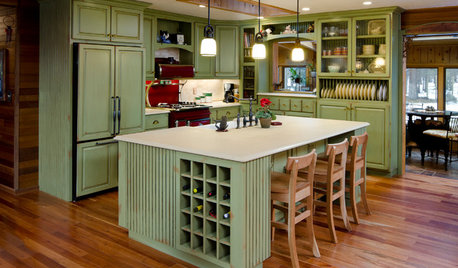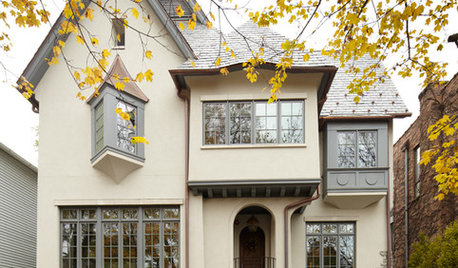Replacing cracked clay dish garden
forest_of_houseplant
10 years ago
Related Stories

GARDENING GUIDESHow to Stop Worrying and Start Loving Clay Soil
Clay has many more benefits than you might imagine
Full Story
FURNITUREOld Furniture: Clean, Reupholster or Replace It?
A veteran upholstery cleaner weighs in on the options for found, inherited and thrift store furniture
Full Story
TASTEMAKERSPro Chefs Dish on Kitchens: Michael Symon Shares His Tastes
What does an Iron Chef go for in kitchen layout, appliances and lighting? Find out here
Full Story
LANDSCAPE DESIGNGreat Design Plant: Retreat to the Shade of Hardy Catalpa
Big foliage and a towering height provide a shady respite in summer, but that's not all hardy catalpa offers dedicated gardeners
Full Story
CALIFORNIA GARDENINGCalifornia Gardener's April Checklist
Outsmart droughts with water-savvy plants and sustainable approaches that suit the landscape
Full Story
CONTAINER GARDENSBeat the Frost With Natural Terra-Cotta Containers
Here's how to protect your pots during the cold winter months
Full Story
GREAT HOME PROJECTSHow to Give Your Driveway and Front Walk More Curb Appeal
Prevent injuries and tire damage while making a great first impression by replacing or repairing front paths
Full Story
EARTH DAYHow to Design a Garden for Native Bees
Create a garden that not only looks beautiful but also nurtures native bees — and helps other wildlife in the process
Full Story
MOST POPULARHow to Reface Your Old Kitchen Cabinets
Find out what’s involved in updating your cabinets by refinishing or replacing doors and drawers
Full Story
HOUSEKEEPINGHow to Tackle Your Home To-Dos
Make quick work of minor repairs and replacements with this thorough, step-by-step approach
Full StoryMore Discussions










dellis326 (Danny)
christine1950
Related Professionals
Beachwood Landscape Architects & Landscape Designers · La Marque Landscape Architects & Landscape Designers · Gainesville Landscape Contractors · Norwood Landscape Contractors · Stamford Landscape Contractors · Brookside Landscape Contractors · Mercedes Landscape Contractors · Oak Harbor Landscape Contractors · Plainview Landscape Contractors · Pleasanton Landscape Contractors · Siloam Springs Landscape Contractors · Uxbridge Landscape Contractors · Wilton Landscape Contractors · Caledonia Interior Designers & Decorators · Tahoe City Interior Designers & Decoratorsforest_of_houseplantOriginal Author
The Ficus Wrangler
forest_of_houseplantOriginal Author
The Ficus Wrangler
forest_of_houseplantOriginal Author
forest_of_houseplantOriginal Author
forest_of_houseplantOriginal Author
forest_of_houseplantOriginal Author
forest_of_houseplantOriginal Author
forest_of_houseplantOriginal Author
forest_of_houseplantOriginal Author
forest_of_houseplantOriginal Author
forest_of_houseplantOriginal Author
Tiffany, purpleinopp Z8b Opp, AL
The Ficus Wrangler
forest_of_houseplantOriginal Author
forest_of_houseplantOriginal Author
forest_of_houseplantOriginal Author
The Ficus Wrangler
forest_of_houseplantOriginal Author